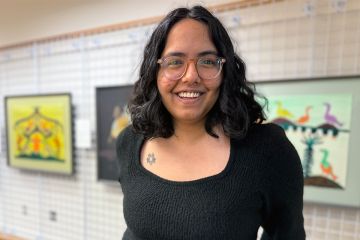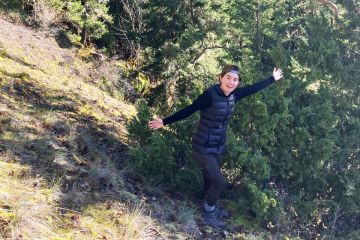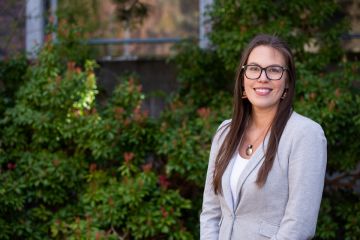Mapping with the Stó:lō
- Tara Sharpe

Sabina Trimble—who graduates this month with an MA in history—will don a mortarboard on Nov. 9, but her fondest memory as a student was being blanketed and given a hand-woven cedar hat, in a traditional Coast Salish honouring at her defence in August 2016.
In spring 2015, Trimble was a participant in the Stó:lō Ethnohistory Field School. Now well into its second decade as the only ethnohistory field school in Canada, it offers firsthand learning opportunities combining traditional knowledges of oral history and research of historical documents. A collaboration between the Stó:lō Research and Resource Management Centre and the history departments of UVic and the University of Saskatchewan, along with the Stó:lō Nation and Stó:lō Tribal Council, the ethnohistory field school has been immersing graduate students every second spring since 1998 deep within Stó:lō communities and territory.
Stó:lō Ethnohistory Field School
Stó:lō (Xwélmexw) traditional territory extends from Yale to Langley. Students board for one week with families and then reside for three weeks in a traditional cedar longhouse.
During Trimble’s thesis defense at UVic on Aug. 22, she wore a traditional cedar hat woven by Gracie Kelly, a Soowahlie First Nation community member, knowledge-holder and cedar-worker whom Trimble describes as being “really central to the success” of her master’s project.
Her thesis supervisor, department chair John Lutz, was also at the defense and helped launch the field school 18 years ago.
Transformative experience transformed into collaborative mapping project
Trimble’s thesis project was a collaborative map-making effort with the Stó:lō community of Soowahlie First Nation. She and community members have worked together over the last three years to produce a digital, layered map of Soowahlie’s reserve and traditional lands. After Trimble’s defense was complete, Kelly sang an honour song for Trimble’s work on the mapping project.
The community as a whole honoured her in a similar way separately, in the Soowahlie Band office on Sept. 1.
“The most important thing to me after I finished thesis work was that the community approved of the map,” adds Trimble. “Knowing they were happy with the final product, and being honoured in this way for the work, is even more important to me than walking the stage to receive my parchment at convocation.”
The map, containing over 110 sites from northern Washington to Chilliwack Lake, is hyperlinked with audio, visual and textual media telling stories about places of importance. “The map is intended to give voice to the importance of place to this community,” says Trimble.
“It also provides an alternative historical narrative to the common, colonial history of the settlement of the Fraser Valley.”
“It is meant not only for The'wá:lí to use as they wish, but also to engage a larger, non-Indigenous audience in rethinking their perceptions about where they live and about the peoples with whom they share their histories and land.”
A transformative and dynamic journey continues…
Trimble first arrived at UVic in 2014. Holding an undergraduate degree in history from Mount Royal University, she was drawn to Victoria and our university by the exceptional Indigenous and environmental focus, as well as the glorious weather.
If she could explain to other students the significance and impact of her field school experience, she’d sum it up in one word: “transformational.”
Her plans include working outside of academia for a year and then applying for PhD programs for the fall of 2018.
Read January's Ring story for more info on the field school.
Photos




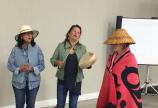
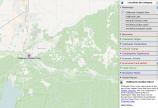
In this story
Keywords: convocation, student life, alumni, history, Indigenous, field schools, mapping, community, graduation

